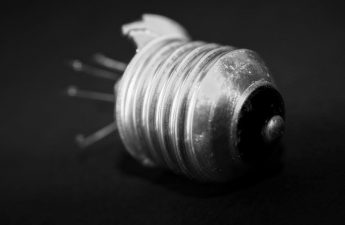Printable tattoo aftercare instructions provide clear, easy-to-follow guidelines for proper healing. They often include cleaning routines, product recommendations, and tips to avoid complications, ensuring vibrant results.
Why Proper Aftercare is Essential for Tattoo Healing
Proper aftercare is crucial for tattoo healing as it prevents infection, promotes vibrant colors, and ensures a smooth recovery; Without proper care, tattoos can develop infections, scabs, or fade prematurely. Following guidelines like washing with antibacterial soap, applying ointments, and avoiding sun exposure helps maintain hygiene and moisture. Ignoring aftercare can lead to complications, delaying healing and affecting the tattoo’s appearance. Adhering to professional advice ensures the tattoo heals evenly, retains its quality, and minimizes risks of allergic reactions or prolonged recovery. Proper aftercare is an investment in the longevity and beauty of your tattoo, making it a vital part of the process.

Understanding the Tattoo Healing Process
Understanding the Tattoo Healing Process involves knowing its stages, from scabbing to peeling, typically taking two to three weeks. Proper aftercare prevents complications and ensures a vibrant result, as outlined in printable guides.
The Importance of Following Professional Aftercare Advice
Adhering to professional aftercare advice is crucial for optimal tattoo healing. Properly following these guidelines minimizes the risk of complications such as infections or scarring, ensuring the tattoo heals vibrantly. Many artists provide printable tattoo aftercare instructions tailored to their clients’ needs, emphasizing the use of specific products and hygiene practices. By following these steps, individuals can maintain the health and appearance of their tattoo during the healing process. Ignoring professional advice may lead to prolonged healing times or permanent damage, making it essential to prioritize these care instructions for the best possible outcome.

Immediate Post-Tattoo Care
Immediate post-tattoo care ensures proper healing. Keep the bandage on for the first 24 hours, then gently wash with antibacterial soap and apply a thin layer of ointment like Aquaphor.
How to Clean and Protect Your Tattoo in the First 24 Hours
Proper cleaning and protection are crucial in the first 24 hours. Keep the bandage on for 2-10 hours, then wash with mild antibacterial soap and warm water. Gently pat dry with a clean towel. Apply a thin layer of Aquaphor or A&D ointment to keep it moisturized. Avoid re-bandaging and let the tattoo breathe. Keep it clean and avoid tight clothing to prevent irritation. Avoid direct sun exposure and harsh products. Moisturize lightly to prevent dryness but avoid over-saturation. Follow these steps to promote healing and prevent complications.

Ongoing Tattoo Aftercare Routine
After the initial 24 hours, continue washing your tattoo with mild antibacterial soap and warm water twice daily. Gently pat dry and apply a thin layer of unscented lotion.
Recommended Products for Keeping Your Tattoo Healthy
For optimal healing, use gentle, fragrance-free products. Aquaphor or A&D ointment is ideal for the first few days to keep the tattoo moist. After 5 days, switch to unscented lotions like Lubriderm or Curel. Avoid harsh chemicals or alcohol-based products, as they can dry out the tattoo. Antibacterial soaps, such as Dial or Provon, are recommended for daily cleaning. Always choose products free from dyes or fragrances to minimize irritation. Applying a thin layer of ointment or lotion twice a day ensures proper hydration and promotes vibrant ink retention. Consult your tattoo artist for personalized product recommendations.
Sun Exposure and Tattoo Healing

Sun Exposure and Tattoo Healing
Sun exposure is crucial during tattoo healing. Avoid direct sunlight, especially during peak hours, and use broad-spectrum sunscreen and protective clothing to prevent fading.
How to Protect Your Tattoo from Harmful UV Rays
Protecting your tattoo from UV rays is essential for maintaining its vibrancy and preventing damage. Use broad-spectrum sunscreen with at least SPF 30 daily, even on cloudy days. Wear protective clothing like long sleeves or UV-blocking fabrics when exposed to direct sunlight. Avoid tanning beds and peak sun hours (10 AM–4 PM) during the healing process. Apply sunscreen 15–30 minutes before sun exposure and reapply every two hours or after swimming. UV rays can cause fading and delay healing, so consistent protection is crucial. Consult your artist for product recommendations tailored to your tattoo’s needs.

Moisturizing Your Tattoo
Keep your tattoo hydrated with thin layers of Aquaphor or A&D ointment, avoiding a shiny appearance. Switch to unscented lotion after a few days for optimal healing and vibrancy.
Best Practices for Keeping Your Tattoo Hydrated
Proper hydration is crucial for tattoo healing. Use thin layers of Aquaphor or A&D ointment initially, avoiding a shiny appearance. After a few days, switch to unscented lotions like Lubriderm or Curel. Apply 2-3 times daily, gently patting with a clean cloth. Avoid over-moisturizing, as it can trap bacteria and delay healing. Keep the tattoo hydrated but not soaked, ensuring it breathes. Consistency is key to maintaining vibrant colors and preventing dryness. Always follow the artist’s recommendations for specific products. Proper hydration balances healing and aesthetics, ensuring your tattoo stays healthy and vibrant throughout the process.

Activities to Avoid During Healing
Avoid swimming, soaking, or submerging the tattoo in water. Refrain from wearing tight clothing and picking at scabs. Minimize sun exposure and avoid harsh chemicals.
Swimming, Soaking, and Other Risks to Your Tattoo
Swimming and soaking can expose your tattoo to bacteria, leading to infections. Avoid pools, hot tubs, and lakes during healing. Submerging the tattoo underwater increases risk of contamination. Similarly, soaking in bathtubs can soften the scabs, causing fading or scarring. Tight clothing may irritate the tattoo, while picking at scabs can lead to infections or permanent damage. Sun exposure should also be minimized to prevent fading. Avoid harsh chemicals and abrasive products, which can disrupt the healing process. Following these precautions ensures your tattoo heals properly and retains its vibrancy. Always prioritize cleanliness and gentle care during recovery.

Monitoring the Healing Process
Regularly check your tattoo for signs of healing, such as scabbing, peeling, or fading. Monitor for redness, swelling, or discharge, which may indicate complications. Seek professional advice if concerns arise.
Signs of Proper Healing vs. Potential Complications
Proper healing signs include light scabbing, peeling, and gradual fading of vibrant colors. The skin should return to its normal state within weeks. However, complications like excessive redness, swelling, or discharge may signal infection. Unusual pain or blistering could indicate allergic reactions or improper care. Monitor for these signs and consult a professional if they persist. Early detection of issues ensures timely intervention, preventing long-term damage. Regular monitoring helps differentiate between normal healing and potential problems, guiding when to seek medical advice. Stay vigilant to ensure your tattoo heals smoothly and retains its quality. Proper care is key to avoiding complications.

When to Seek Medical Attention
Seek medical attention if you experience severe redness, swelling, warmth, or discharge around the tattoo. These symptoms may indicate infection or an allergic reaction requiring professional care.
Recognizing Infection or Allergic Reactions
Monitor your tattoo for signs of infection or allergic reactions, such as excessive redness, swelling, warmth, or discharge. Severe itching, rashes, or blistering may indicate an allergic response to ink or aftercare products. If these symptoms persist or worsen, seek medical attention promptly. Proper wound care and professional guidance are crucial to prevent complications. Always follow the advice of your tattoo artist and healthcare provider to ensure a safe and effective healing process.
Proper aftercare is essential for ensuring your tattoo heals beautifully and remains vibrant. By following the guidelines outlined, you can minimize risks and promote optimal healing. Keep your tattoo clean, moisturized, and protected from the sun. Avoid soaking or scratching, as this can lead to complications. If you notice any signs of infection or allergic reactions, seek medical advice immediately. Remember, everyone’s healing process is unique, so adjust your care routine as needed. Stay patient and consistent, and your tattoo will reward you with stunning results. Always prioritize professional advice and take the time to care for your ink properly.



